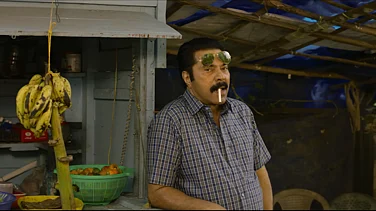We are in 2022 but nothing much has changed for smaller budget films in the eyes of Multiplex owners who, according to leading trade analysts, are treating the non-A-list starrer films as ‘untouchables’ and giving them no time to grow.
“The biggest myth or misconception that multiplex people have is that movies are only for big banners and big star cast and only they can draw the audience and sadly all these programs are controlled by just a handful of people like programming heads. They decide which film should get what showcasing without even considering the merit of the film,” Atul Mohan, senior trade analyst, tells Outlook.
We saw how 'The Kashmir Files', made on a shoestring budget, turned out to be one of the highest-grossing Hindi films of the year, despite having no big stars. What was even unique about Vivek Agnihotri's film was the complete word-of-mouth publicity.
In an interview with The New Yorker in June 2022, Agnihotri stated that ZEE Studios did not have faith in the film and thus the production studio had only released the film on 400 screens; and that the increase in the shows was in response to the audience demand.
In the recently released films, we saw how Pankaj Tripathi’s ‘Sherdil: The Pilibhit Saga’ was replaced instantly after poor business at the box-office and the story of 'Siya's is no different.
“What happens when multiplex allots shows, they give very odd show timings to these films for example for a non-star cast movie, why would anybody wake up at 9 O' clock in the morning and go and watch the film? They treat non star cast movies like untouchables and just for the sake of release, they give odd shows. Then they see that nobody has turned up for the film so what they do is they remove the film the next day,” says Mohan and adds that multiplexes don't even give a film a chance to grow.
Girish Johar, Producer & Film Business Expert, says that post the pandemic what has happened is that the audiences have become very selective while walking into a theatre and one of the reasons is the ticket prices.
“It's pinching their pockets so watching these kinds of films which are very genre driven and content-wise a little stronger, they find it a little expensive to go and watch this family. They would rather wait for the reviews and watch it on the ott or a satellite so that’s the trend like now post-pandemic,” he says and adds that it’s a matter of time when they will strike a chord once again.
He also suggests exhibitors take some learnings from National Cinema Day when the ticket price went down to Rs. 75.
"Luckily we had National Cinema Day so the walk-ins were quite good for even films like 'Chup: Revenge of the Artist' and 'Dhikha: Round D Corner' so I hope that whatever learnings we have got, the exhibitors take it in their stride and also ensure that they execute their learnings going ahead and give these smaller films and mediocre films more chance at the box office,” he says.
For some, audiences' love for simpler stories is also the reason why multiplexes take these decisions.
Vishal Sawhney, Director and CEO, Carnival Cinemas says that although a lot of viewers may be interested in stories with more complex themes, there are still plenty of cinema-goers out there who are drawn to more traditional, "larger than life" stories. “Also sometimes, the simplest stories are the ones that resonate the most,” he says and adds that “small budget films may not always be box office hits, but they often have a better chance of recovering their costs through TV or OTT platform viewership”
So does this mean there will be no good days for small-budget films at the multiplexes?
To this, Mohan says that producers, stakeholders, distributors, and exhibitors have to come together and make a discussion and categories films.
“Each film must be given at least 3- 4 days of run at a good price so that everybody is given a fair chance. There should be some allotments or reservations for small films so that they can make a couple of shows in a day and that too at subsidized rates for non-star films," he says citing an example of how one can have Pankaj Tripathi film tickets at Rs. 500 when you are giving the same price for Hrithik Roshan and Ranbir Kapoor films.
" You have to keep the price that way and make it affordable for the lover of cinema. I know many friends of mine who love these films but they can't go because they say I can't afford the film for Rs. 500," he says.
Girish Johar too adds that the scope is for everyone to flourish if the planning is done.
“We cannot deny the fact that A list star films are still the favorites of multiplexes. Having said that, please understand that even if you take top 10 stars, they do one film or probably two films in a year. The rest of the days mediocre and smaller films will work over that period so I think the equilibrium will set in and such films will step into place. If they are good people will watch it but at the right price.”


























